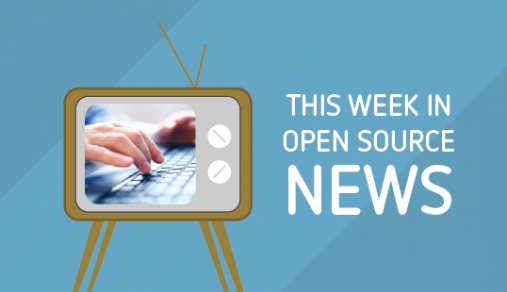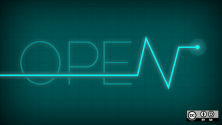In this edition of our open source news roundup, we take a look at tracking artwork with open source software, an open source medical image repository, and more.
Tracking artwork using open source
Open source is everywhere, and now it's helping the art world with one of its biggest problems: determining the chain of ownership of works of art. Following that chain is now easier, thanks to a website called Mapping Paintings.
The brainchild of Jodi Cranston, a professor at Boston University, Mapping Paintings "is an open source, searchable platform for compiling provenance data for individual artworks (not just paintings, despite its name)." With it, users can get a visual map of "how different pieces by the same artist have traveled or where artworks currently owned by the same museum came from." Users can even upload photos of artworks and provenance information to create their own custom provenance maps.
New open source medical image repository debuts
A team of medical researchers from four European institutions has created the Image Data Resource, a repository "that is capable of storing and integrating data from multiple laboratories, whilst also significantly enhancing the potential for sharing and reusing imaging data."
The repository "offers potential to identify new therapies and targets, and broadens the scope of research by allowing scientists around the world to access each other's imaging datasets," the team writes in a recently published paper. The software underpinning the repository is open source, which "opens the possibility of the tech being deployed in other image data systems."
Open technologies and open access are keys to networked cities
That's according to Francesca Bria, Barcelona's Chief Innovation Officer. In an interview with Shareable, Bria points out that open technologies have an impact "on the economy, democracy and manufacturing," and to thrive cities must build digital strategies around open technologies.
Tied up in that is the sovereignty and ownership of civic data. Bria states that "it's important to acknowledge that this data belongs to the citizens, not governments. Cities should act as the intermediary." As Bria admits, building a networked city requires more than technology: there are also cultural and institutional barriers to overcome. In the end, though, "if society can't enter and do things, monitor and track activities, nothing will change."
System76 announces its own Linux distro
When Canonical announced earlier this year that it will replace its Unity desktop with GNOME, many people assumed that System76 (known for selling computers running Ubuntu). Instead, the company has rolled its own Linux distribution. Called Pop!_OS, it combines Ubuntu, GNOME Shell, and a number of enhancements to GNOME made by System76's developers.
Pop!_OS is "squarely focused on the professionals and makers that use their computers to create," according to System76's CEO Carl Richell. That includes developers, engineers, makers, 3D modelers, and others. While an an alpha release of Pop!_OS is available and the code is on GitHub, a stable release will be available Oct. 19.
In other news
- Oregon State University's open source lab leader looks to further FOSS community outreach
- Vitalinux: Aragon's school Linux distribution
- Linux is running on almost all of the top 500 supercomputers
- Open source is key to a predator-free New Zealand
Thanks, as always, to Opensource.com staff members and moderators for their help this week. Make sure to check out our event calendar to see what's happening next week in open source.







Comments are closed.